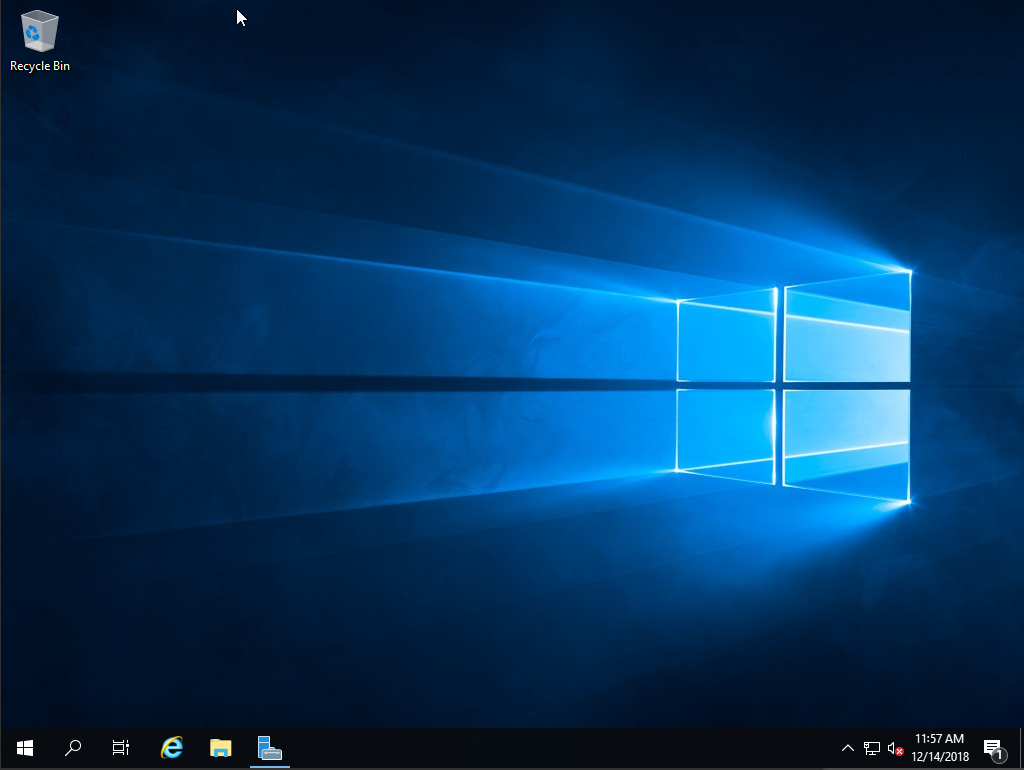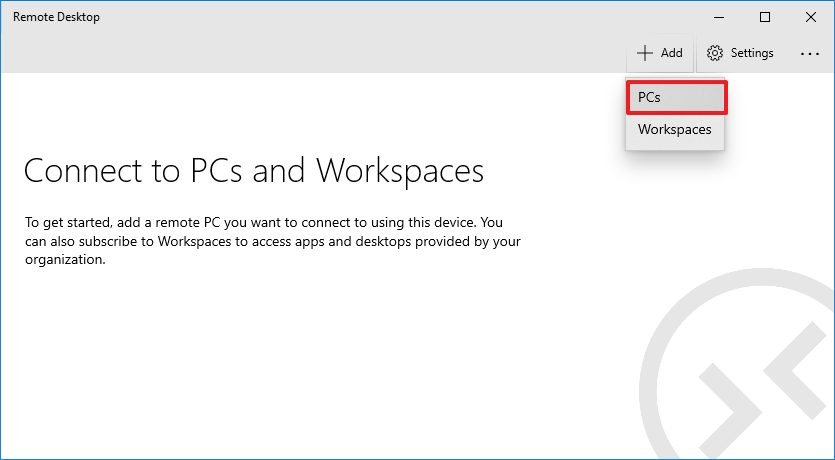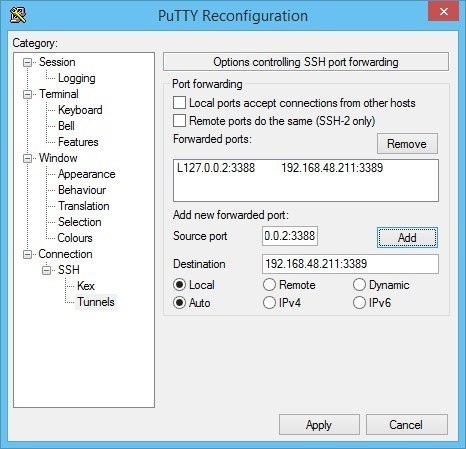There are numerous reasons behind the use of remote desktops, which play a crucial role in today’s IT software ecosystem. If you’re providing support services for desktops and laptops, working with virtual servers or applications, or working in a company in which the offices are distributed nationally or internationally, you’ll be using remote desktop software.
Windows systems come with a built-in protocol for remote connections. Microsoft Remote Desktop Protocol (RDP) provides a graphical interface through which users can connect to a remote computer via a network connection. However, there are now several RDP alternatives on the market, designed to address potential functionality gaps. My top recommendation for a remote desktop alternative is SolarWinds® Dameware®, offering an on-premises and a cloud version, both designed to facilitate the easy handling of remote desktop issues.
What Is RDP?
Since the question was how to transfer using the windows 10 app vs the desktop program: To transfer files I use the 192.168.1.2c$ method (where the IP address is for the other machine). It is fast and reliable. I have a folder with c-drive shortcuts to all of the machines I remote to. I prefer the Windows Store RDC client for Windows10 clients. SolarWinds Dameware Remote Support (DRS) Dameware Remote Support is a significant upgrade. Some of these considerations can be addressed using Microsoft Remote Desktop Services to act as a gateway to grant access to remote desktop systems. The Microsoft Remote Desktop Services gateway uses Secure Sockets Layer (SSL) to encrypt communications and prevents the system hosting the remote desktop protocol services from being directly.
RDP, short for Remote Desktop Protocol, is a protocol developed by Microsoft. It allows you to connect to another computer using a graphical user interface, so you can interact with the remote machine. You can control a remote desktop session and delete or copy text between applications running on the host machine and the guest machine. This helps with remote troubleshooting and issue resolution, so IT staff won’t need to go directly to the computer experiencing the problem.
However, with the rise of cybercrime have come warnings about the security of RDP. Moreover, several RDP alternatives have appeared on the market, many of which offer much more in the way of capabilities depending on your specific needs. If you’re looking for an alternative to Remote Desktop Protocol, consider the options below.
Best Remote Desktop Alternatives
Dameware Remote Support is a significant upgrade from RDP, designed to provide all of the same features as the Microsoft protocol along with added features that help enhance problem resolution and cybersecurity on remote devices. Like RDP, DRS makes it easy to connect remotely to other computers. With additional features built to go beyond those in RDP, DRS makes for a comprehensive and easy-to-use remote desktop connection manager alternative.
Like RDP, DRS offers multi-platform remote access, with support for Mac, Windows, and Linux computers. In an enterprise setting, for example, it can work across your Windows desktops, Linux servers, and Mac devices staff may connect with from home. That includes providing access to computers from Android and Apple devices including tablets, which are not supported in RDP.
Both RDP and DRS offer the ability to connect over both the internet and LAN. This is particularly important in DRS since this, along with the tool’s other features, can help facilitate straightforward troubleshooting. With both DRS and RDP, you can remotely reboot entire systems or stop services and processes if something is causing the system to fail. DRS is designed to go beyond that, though—it includes system tools that allow you to fix problems on a computer you’re connected to remotely without having to interrupt the user’s session. DRS, like RDP, also lets you directly copy and paste—or delete—text in applications between the host and guest machine.

Dameware Remote Support offers a free trial for up to 14 days.
Another good option to consider, particularly if you are working in a cloud-based IT environment, is Dameware Remote Everywhere. DRE is in some ways the same tool as DRS, but it offers slightly different features.
First, DRE is designed for use in the cloud, which means it is accessible from any compatible device with internet connection. RDP also connects to remote devices over the internet; however, a distinction between the two tools may arise when it comes to speed. While DRE has a particular focus on speed, with remote connections typically established within eight seconds, RDP typically has slower connection times.
DRE also includes additional features for taking screenshots and recording during remote sessions and connecting with the user through VoIP or video call. RDP doesn’t natively include these features, with the only way to record or take screenshots during remote sessions is by implementing outside tools and procedures.
Dameware Remote Everywhere offers a free trial for 14 days.
Royal TS provides support for RDP and other connection protocols, including VNC, SSH, FTP and SFTP, and connection through web-based interfaces. Like other professional tools, it includes credentials management and sharing features, so you don’t need to log in repeatedly. It also provides remote troubleshooting capabilities.
One of the unique features of Royal TS is it can create command tasks and key sequence tasks, which allow you to create your own tasks and automate parts of your troubleshooting processes. For example, ping and traceroute are built in, and you can automate repetitive tasks, so you can execute them as soon as a connection is established.
Royal TS distinguishes itself from RDP when it comes to credential allocation. While RDP lets you save and share credentials between teammates, it does not let you save credentials tied to a remote desktop gateway. Not only does Royal TS let you create objects and folders and dynamically allocate credentials, it also lets you link folders and connections to inherit credentials. These features are designed to facilitate strong access and security measures.
Royal TS offers a free download of its “Lite” version, which allows up to 10 connections and 10 credentials. The paid version is also available through the developer’s website.
If you’re looking for an RDP alternative specifically for use with Mac computers or mobile devices, Edovia produces many products, including several versions of Screens.
Screens iOS allows you to control other computers from your iPhone or iPad, using an SSH connection. It can connect to Mac, Linux, Raspberry Pi, and Windows PCs, using the Screens Connect app. You can view the current session (e.g., for troubleshooting), or start a new session.
Screens Mac provides the same capabilities as Screens iOS, but from Mac OS systems.
There is a free trial of Screens Mac, and a free version, called Screens Express, with limited usage for specific circumstances. Screens Mac is downloadable through the Edovia website. You can buy Screens iOS from the App Store.
Terminals is an open-source remote desktop manager intended to manage the problem of controlling multiple connections simultaneously. It integrates RDP as one of the protocols it supports, but also works with VNC, VMRC, SSH, Telnet, RAS, Citrix ICA, and HTTP and HTTPs.
It includes several basic features to make the remote connection experience smoother, including a multi-tab interface, resizable windows, customizable toolbars, and a connections history, so you can see which machines you have connected to recently. You can also search by server name and look at protocol notes. This tool is high-quality, but basic, and it may not be suitable for a large enterprise needing a greater set of features for IT support and troubleshooting management.
You can download Terminals for free on Github.
As a free tool, Terminals is a mRemoteNG alternative. For a comparison of mRemoteNG vs. Terminals, look at both repositories in Github to view the documentation, as it gets a little technical.
How to Choose an RDP Alternative
There are several factors behind choosing a good RDP alternative, but your decision will in large part depend on the number of connections you’re dealing with, the type of information in your environment (e.g., if it’s sensitive and needs extra security), and the size of your enterprise.
A free or open-source tool might be suitable in a low-risk, small business environment, in which case Terminals is a good choice. For a large enterprise or a company with sensitive data, invest in a professional tool such as Dameware Remote Support or Dameware Remote Everywhere.

Windows Remote Desktop is one of the go-to proprietary services for those managing a few remote computers on the same network. It’s free, and it’s very easy to set up and use.
But what if you need to support a larger number of clients outside your network? Will WRD be enough for that? Are there any substantial feature limitations?
Let’s dive into the pros and cons of using Windows Remote Desktop and investigate.
Pros
- It’s free. Remote Desktop is a built-in Windows service that runs on the Remote Desktop Protocol and therefore is completely free. You don’t have to spend a single dollar on a third-party tool if your needs are limited to in-office remote support or accessing your centralized file storage on-the-go.
- It’s easy to set up. Although Windows Remote Desktop is disabled in the operating system by default, it’s very easy to turn it on. Note, however, that Home editions of Windows don’t include this service, but we’ll get back to that soon.
Cons

- It may not be that easy to set up outside the office. If you’re planning to use Windows Remote Desktop outside your office network, you’ll need to configure the remote network to accept incoming connection requests. Besides that, you’ll need to know the IP address of the server along with the login credentials for the remote machine(s) you want to connect to. This is a no-go approach if the remote client requiring assistance is not a tech-savvy person.
- It’s only included in Pro, Business or Ultimate versions of Windows. If you need to support your friends, family members, or a large number of clients running any of the Windows Home versions, then Remote Desktop shouldn’t be your tool of choice. You just won’t be able to connect.
- It doesn’t allow to reboot the remote machine and automatically reconnect. Being able to reboot the remote computer and automatically reconnect is a vital remote support feature. While many third-party applications such as FixMe.IT allow you to do that with a single mouse click, Windows Remote Desktop requires additional actions on your end.
- It locks the remote screen, making the remote user unable to interfere or see anything that you’re doing on their machine. This is one of the biggest problems of Windows Remote Desktop that hasn’t been yet resolved. Furthermore, there are no whiteboard tools that would allow you to demonstrate a certain process to your client.
- It doesn’t really allow to run multiple concurrent sessions. Although there’s a workaround that lets you turn on multiple remote desktop connections on Windows 10 & 8, Microsoft’s built-in tool simply wouldn’t be able to handle dozens of connections with different network settings. Techinline’s FixMe.IT, in turn, allows you to run an unlimited number of concurrent support sessions and easily switch between them in the process.
Conclusion
For local network administration and accessing your office machines remotely, Windows Remote Desktop is a great tool that’s free and easy to set up. However, if your primary goal is to easily perform remote tech support, you’d better check out third-party applications such as FixMe.IT.
Are you using Windows Remote Desktop to access your office machines? Did we miss any of its advantages or disadvantages? Let us know in the comments!

Visit our website to learn more about the FixMe.IT remote desktop application and its features. Join us on Facebook, Twitter, or LinkedIn to get all the latest product and blog updates as they happen.
Free Remote Desktop Protocol Windows 10
Related Posts
